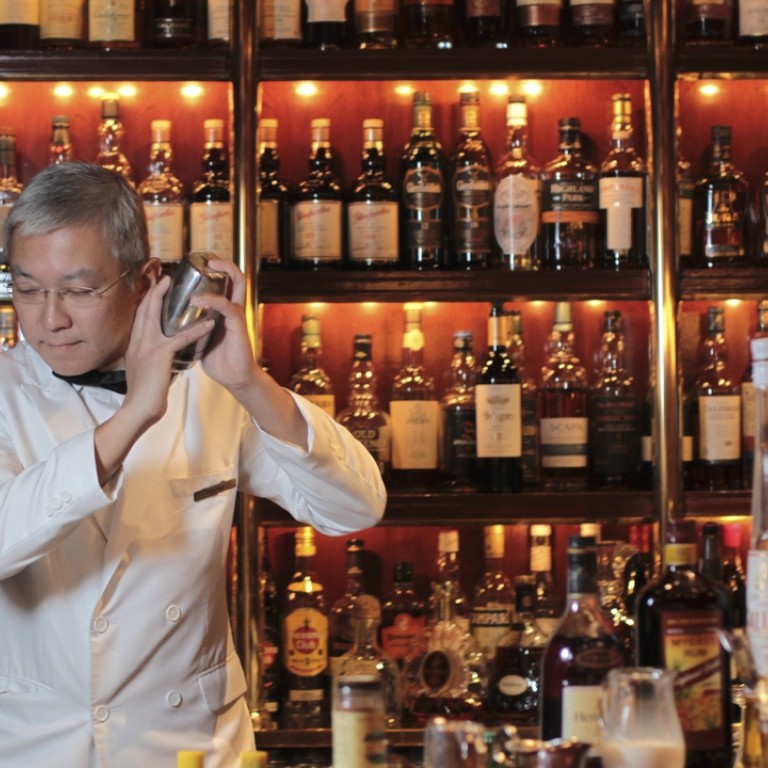
Where to find Hong Kong’s best eggnog, spirit of New Years past
Eggnog used to be a Hong Kong holiday tradition – and a select few places are still able to rustle it up on request, as Robin Lynam is happy to discover
One of the colonial-era traditions that sadly did not survive the 1997 handover was the New Year’s Day parties thrown by The Peninsula and Mandarin Oriental hotels.
As Lunar New Year took precedence, these gatherings, at which guests were offered a choice of Black Velvet or eggnog, were quietly discontinued. After that, for many people, eggnog ceased to be a feature of the holiday season in Hong Kong. Although you can still order the drink in the bars of both hotels, neither lists it on its drinks menu.
SEE ALSO: Susan Jung’s quick recipe for making eggnog
A fair number of Americans and Canadians still ask for it, though. They have a special fondness for eggnog, which in North America is traditionally served from around Thanksgiving to the end of the Christmas holiday season.
Harry Craddock, head bartender at London’s Savoy hotel in 1930 when the first edition of The Savoy Cocktail Book was published, wrote in it, “The Egg Nogg [sic] is essentially an American beverage, although it has been appreciated throughout the world for many years. Its introduction throughout Christmas time in the Southern States of America is traditional. In Scotland it is known as ‘Auld Man’s Milk’.”

One theory on the origin of the word is that it derives from the 17th-century term for a small wooden drinking vessel, the noggin, from which posset, among other things, was drunk.
In Britain the alcohol used for eggnog in the 18th century was either brandy or fortified wine, usually sherry or Madeira; in America, Caribbean rum and domestically produced whiskey became popular as cheaper substitutes.
Among the four “Egg Noggs” Craddock lists, the basic recipe calls for egg, sugar, milk, and “one glass of any spirit desired”. The no-expenses-spared Baltimore Egg Nogg requires brandy, rum and Madeira, although for a mere Breakfast Egg Nogg he was prepared to settle for brandy and Curaçao.
He also lists a curious variation called General Harrison’s Egg Nogg, made without milk, which combines an egg yolk, sugar, and cider, and could easily be mixed at home, although I’m not inclined to try it.
“This is a splendid drink, and is very popular on the Mississippi River,” wrote Craddock approvingly. “It was the favourite beverage of William Henry Harrison, ninth president of the United States of America.”

I usually drank Black Velvet – Guinness and champagne – at those New Year parties, but enjoyed the occasional eggnog, so just before Christmas I dropped into The Chinnery bar to see how it’s made at the Mandarin Oriental.
“The ingredients are brandy, dark rum, egg yolk, sugar syrup, fresh milk, and just a little Galliano, all mixed in a shaker,” explains bartender Chris Chu.
“It’s popular at Christmas and New Year, even though it’s not on the menu. It’s one of those drinks we can prepare which aren’t specifically listed. Others include the Screwdriver, the Salty Dog and the Lychee Martini.”
Refrigerated eggnog can be kept for some time, and is said by some to improve with age
Chu gives the drink a prolonged vigorous shake so it is well chilled, and adds a light dusting of grated nutmeg. It looks innocuous, but packs a punch. The drink is slightly spicy, with the brandy and rum in roughly equal contention for dominance of the flavour. The Galliano contributes a touch of vanilla and anise.
Although most recipes for the drink call for fresh raw eggs, bartenders generally don’t use them for food safety reasons. Refrigerated eggnog can be kept for some time, and is said by some to improve with age, but if the eggs are infected with salmonella it will take several weeks for the alcohol to kill the bacteria.
The Mandarin uses a pasteurised egg yolk product packaged in a carton. The dark rum is Myers’, and the brandy is Hennessy VSOP Cognac.
“Sometimes people use cheaper ingredients for eggnog, but we use good quality spirits. And sometimes if a customer asks us to use an XO, we can also do that,” says Chu.
At The Peninsula the recipe is slightly different, with a little whipped cream added to the milk and lemon juice substituting for the Galliano, but it, too, calls for dark rum and brandy.
Eggnog can be served hot or cold, and the bar of Gradini in The Pottinger Hong Kong is offering both versions on its seasonal cocktail list.
The Chinnery, 1/F Mandarin Oriental, Hong Kong, 5 Connaught Road Central, tel: 2825 4009
The Bar, 1/F The Peninsula, 19-21 Salisbury Road, Tsim Sha Tsui, tel: 2696 6773
Gradini, lobby, The Pottinger Hong Kong, 74 Queen’s Road Central, tel: 2308 3088

